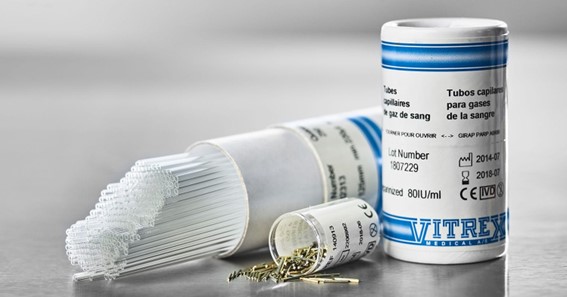Are you curious to know what is capillary tube? You have come to the right place as I am going to tell you everything about capillary tube in a very simple explanation. Without further discussion let’s begin to know what is capillary tube?
In various industries and scientific fields, capillary tubes play a crucial role in fluid dynamics and measurement. A capillary tube is a small, thin tube with a narrow internal diameter. It finds applications in diverse areas such as medical diagnostics, laboratory experiments, refrigeration systems, and more. In this blog, we will explore the concept of capillary tubes, their working principles, and their significance in different domains.
What Is Capillary Tube?
A capillary tube is a narrow tube typically made of materials like glass, plastic, or metal. It has a small internal diameter, often ranging from a few micrometers to a few millimeters. The tube’s small size and narrow bore create capillary action, which allows liquids or gases to rise or flow through the tube against the force of gravity.
Working Principle Of Capillary Tubes:
Capillary action, also known as capillarity, occurs due to intermolecular forces, such as adhesive and cohesive forces, between the liquid and the tube’s inner surface. When a liquid enters a capillary tube, it climbs up or moves through the tube, forming a concave or convex meniscus. This phenomenon arises from the balance between the adhesive forces attracting the liquid to the tube’s surface and the cohesive forces holding the liquid molecules together.
Applications Of Capillary Tubes:
- Medical Diagnostics: Capillary tubes find extensive use in medical diagnostics, particularly in blood collection and analysis. They enable the collection of small blood samples for various tests, such as blood glucose monitoring, hematocrit measurement, and microhematology.
- Laboratory Experiments: In scientific research and laboratory experiments, capillary tubes are employed for various purposes. They facilitate precise liquid dispensing, mixing of reagents, and separation techniques like capillary electrophoresis and chromatography.
- Heat Transfer And Refrigeration: Capillary tubes are an integral component in refrigeration and air conditioning systems. They regulate the flow of refrigerant between different components, causing a pressure drop and facilitating the cooling process.
- Fluid Flow Control: Capillary tubes are utilized for flow control in microfluidic devices, inkjet printers, and fuel cells. They enable precise control of liquid flow rates and distribution in these applications.
- Engineering And Manufacturing: Capillary tubes are employed in engineering and manufacturing processes, including precision dispensing of adhesives, lubricants, and coatings. They facilitate the controlled delivery of fluids in micro-scale applications, such as electronics assembly and microfabrication.
Benefits Of Capillary Tubes:
- Precise Fluid Measurement: Capillary tubes enable accurate measurement of small liquid volumes due to their narrow diameter. This precision is crucial in various analytical and diagnostic procedures.
- Simplicity And Reliability: Capillary tubes are simple in design, cost-effective, and reliable in their operation. They require minimal maintenance and are widely available in different sizes and materials.
- Versatility: Capillary tubes find applications across multiple industries and scientific disciplines. Their adaptability and compatibility with various fluids and gases make them versatile tools in numerous processes.
Conclusion:
Capillary tubes, with their unique properties and ability to harness capillary action, serve critical functions in a wide range of applications. From medical diagnostics to laboratory experiments, refrigeration systems to fluid control devices, these small tubes contribute to precise fluid measurement, controlled fluid flow, and efficient heat transfer. Understanding the working principles and applications of capillary tubes helps unlock their potential for innovation and problem-solving in diverse industries and scientific fields.
FAQ
What Is Capillary Tube Called?
Capillary tubing or capillary tubes are very thin tubes made of a rigid material, such as plastic or glass in which a liquid flows up into the tubes against gravity in a process called capillary action (capillarity).
What Is Capillary Tube And Its Function?
Capillary Tube – A tube with a calibrated inside diameter and length used to control the flow of refrigerant. It also connects the remote bulb to the thermostatic expansion valve, and/or the remote bulb to the thermostat.
Where Are Capillary Tubes?
Capillary tubes can be found on small, high-volume commercial systems such as household refrigerators, but can also be used for larger systems if the operating conditions are relatively stable. The capillary tube is vulnerable to clogging, which is why a filter drier and filter are normally mounted before the inlet.
What Is The Definition Of Capillary Tube 12th Class?
Definitions of the capillary tube. a tube of small internal diameter; holds liquid by capillary action.
I Have Covered All The Following Queries And Topics In The Above Article
What Is Capillary Tube In Chemistry
What Is Capillary Tube In Refrigeration
What Is A Capillary Tube
What Is The Use Of Capillary Tube
What Is Capillary Tube Class 10
What Is Capillary Tube In Chemistry
What Is Capillary Tube In Thermometer
What Is Capillary Tube In Refrigeration
Capillary Tube Uses
Capillary Tube Working Principle
What Is Capillary Tube Class 12
What Is Capillary Tube Class 11
What Is Capillary Tube
What is the capillary tube method used for
What is called capillary tube



